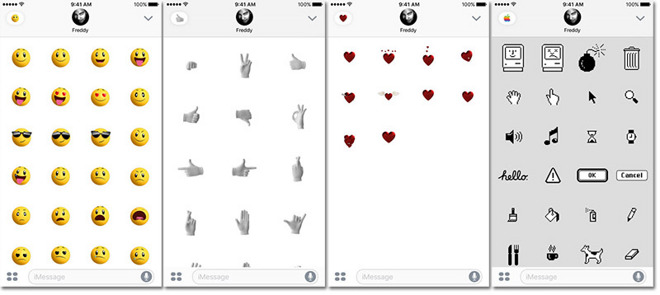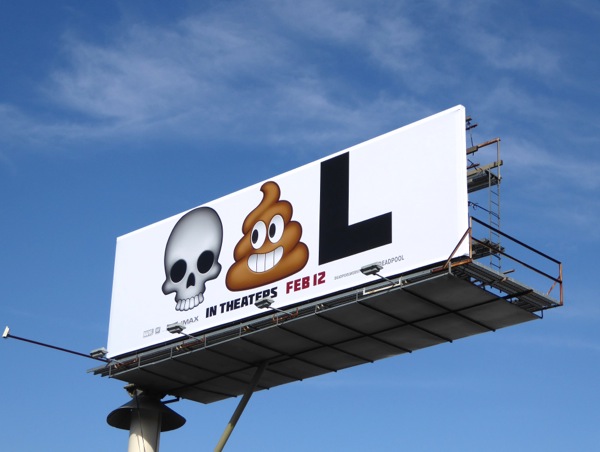Emoji marketing is a relatively recent phenomenon wherein companies use emojis in their advertisements and notifications. This relatively new language of emojis has taken off since Apple popularized the-emoji keyboard in 2008. Since then, both Apple and Android have created and refined emojis and some third-parties apps and companies are even creating their own versions for download. What began as a quirky and quick method for messaging, using emojis is now a force in the marketing world.

Emoji are small pictures used in chat messages, texts, and emails. Descendants of the emoticon, emojis enjoyed their first widespread success when Apple popularized their emoji keyboard for the iPhone in 2008. Emoticons and emojis allow users to use visual representations (literally small pictures) to convey a meaning, message, or reaction with few-to-no words. The saying “a picture is worth a thousand words” plays heavily here and highlights the benefit of using images: they provide users with an easy and quick emotional experience.
Because successful advertising comes from eliciting positive emotions from potential customers, emoji marketing is a valuable method to consider. In general, emojis are playful, and using them wisely allows companies and campaigns to clarify their intent with a simple click. Companies, philanthropic foundations, and even politicians can beeline to a consumer’s emotional core.
Emoji Success Stories: Clever Marketing Campaigns
What exactly does emoji marketing look like? Below, we have outlined a few examples of some emoji success stories where creativity made the cut.
Domino’s Pizza

Our first example is the 2015 twitter campaign by Domino’s Pizza. Pizza lovers can register their Twitter handle to their online Domino’s account and then simply tweet a pizza emoji (🍕) to place an order for delivery. The ingenuity of this campaign is that Domino’s now puts part of their advertising responsibility into the hands of their customers. The tweets, which are normally public, will be shared, thereby notifying fellow users of the trend. Domino’s scored big with this one, not only providing a fun interface for their customers but essentially getting some free publicity out of it as well.
The World Wildlife Fund
The World Wildlife Fund (WWF) used emojis in a positive and interactive way in their Twitter campaign of 2015 when they provided users with a downloadable emoji keyboard consisting of endangered animal images. Users could then tweet these emojis to not only raise awareness to their endangered status but also to make a small donation (€0.10). WWF tallies every emoji the individual tweets over a one-month period, and then sends their users a summary with information on how to voluntarily donate.

Philanthropic and non-profit organizations have to be especially creative in appealing to younger audiences, particularly those who are without either the capital to make regular donations or the time to fully dedicate to the many causes they may feel passionate about. With their emoji campaign, WWF invented a clever and time-saving way to get people involved and raise funds.
Deadpool
Emojis can extend beyond digital advertising. One example is when Twentieth Century Fox used emojis only to advertise their new film, Deadpool, in 2016. The Los-Angeles-based billboard gave pause to passersby with its attention-garnering image. The emojis appeal to the film’s targeted audience, the sarcastic cut of the millennial generation. It’s a great example of merging traditional film advertising techniques with new digital trends.

The reaction to the billboard was generally positive. Gizmodo called it “the best use of an emoji [it had] ever seen” while Adweek said the emoji billboard was “so stupid, it’s genius.” The old adage of “Any press is good press,” applies here. Despite any adverse reactions to Fox’s campaign, it generated a storm of critique, which ultimately served as a fantastic promotion for the film.
Introducing Emojis into Your Marketing campaigns: Avoiding Pitfalls 🤔
Going Overboard
If you are serious about delving into emoji marketing, there are two main problem areas to avoid. The first goes along with the age-old saying that sometimes there can be “too much of a good thing.” Take American automotive company Chevrolet, whose attempt at playfully puzzling their fans took a wrong turn. In a 2015 press release, Chevrolet released the entire content in emojis and challenged people to decode it. While some news outlets and blogs got on board by attempting to decode the message before the deadline, the campaign fell flat. The overwhelming “text” proved to be too bewildering for the casual reader. The takeaway from this less-than-shining moment is that sometimes emojis cannot replace text. Sure, they can enhance a press release, but this cryptic cipher shows that Chevy only managed to overshoot their intended idea.
Lost in Translation
The second thing to consider is that emojis are a type of language and, like any language, is subject to the same bad translations and misinterpretations. Additionally, learning to use emojis harbors the same hurdles and pitfalls as learning a new language. Hand gestures, for one, are easy to misconstrue. While a thumbs-up (👍) in the United States might indicate a positive response like, “good job” or “sounds good,” the same gesture in the Middle East is insulting and indicates that a person can shove their thumb you-know-where. So how do we navigate this new language in a culturally-sensitive and thoughtful way?
The sure-fire way to avoid any translation disasters is to recruit an emoji translator. These are people who know the ins and outs of emojis and their meanings cross-culturally. They will be able to tailor your ads to be in line with the status quo of your market.
The BBC, for example, featured an article in 2016 describing how a London-based company advertised for an emoji translator to explain “cross-cultural misunderstandings.” Emoji translators just might be a budding and lucrative profession. Keith Broni, for example, offers his emoji research and interpretation services through Translation Today.
If you are on the fence about an emoji translator, or you simply don’t have the financial resources to devote to emoji interpretation, you can do your own research. Nowadays you can find data online about the most commonly-used emojis in hot marketplaces and countries. Emojipedia, the self-proclaimed “Home of Emoji Meanings,” is a dictionary that decodes every emoji and helpfully guides users about their intended meanings and potential cross-cultural mistranslations.
In Conclusion: Some Rules of Thumb
As with any marketing tactic, you have to be aware of your target audience. Emojis seem to be geared for the younger, digital audiences, but more and more, older generations are experimenting with them. So, depending on your aim, you will want to edit your emoji use accordingly.
A great way to incorporate emojis without overwhelming your audience is through push notifications. Twitter has been on board with this for years, and now companies and apps are following suit, even creating their own brand-based emojis. Push notifications allow for direct, user home screen advertising, which is prime real estate perfect for the quick and simple emotion-eliciting marketing that emojis provide.



